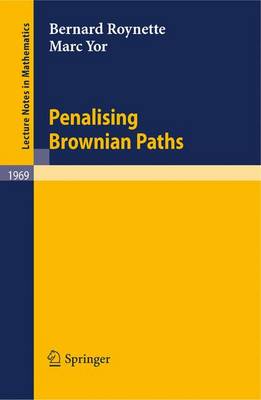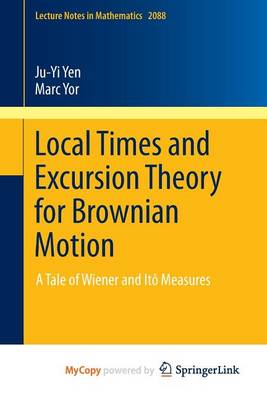Lecture Notes in Mathematics
3 primary works
Book 1873
Random Times and Enlargements of Filtrations in a Brownian Setting
by Roger Mansuy and Marc Yor
In November 2004, M. Yor and R. Mansuy jointly gave six lectures at Columbia University, New York. These notes follow the contents of that course, covering expansion of filtration formulae; BDG inequalities up to any random time; martingales that vanish on the zero set of Brownian motion; the Azema-Emery martingales and chaos representation; the filtration of truncated Brownian motion; attempts to characterize the Brownian filtration.
The book accordingly sets out to acquaint its readers with the theory and main examples of enlargements of filtrations, of either the initial or the progressive kind. It is accessible to researchers and graduate students working in stochastic calculus and excursion theory, and more broadly to mathematicians acquainted with the basics of Brownian motion.
Book 1969
Penalising a process is to modify its distribution with a limiting procedure, thus defining a new process whose properties differ somewhat from those of the original one. We are presenting a number of examples of such penalisations in the Brownian and Bessel processes framework. The Martingale theory plays a crucial role. A general principle for penalisation emerges from these examples. In particular, it is shown in the Brownian framework that a positive sigma-finite measure takes a large class of penalisations into account.
Book 2088
Local Times and Excursion Theory for Brownian Motion
by Ju-Yi Yen and Marc Yor
This monograph discusses the existence and regularity properties of local times associated to a continuous semimartingale, as well as excursion theory for Brownian paths. Realizations of Brownian excursion processes may be translated in terms of the realizations of a Wiener process under certain conditions. With this aim in mind, the monograph presents applications to topics which are not usually treated with the same tools, e.g.: arc sine law, laws of functionals of Brownian motion, and the Feynman-Kac formula.


